TAGGED AS: Sci-Fi
These days, cancellation isn’t necessarily the end for a television series; between DVD sales, the Web, and the ever-expanding cable dial, if a show has a fervent enough fanbase, odds are someone is going to come along to take advantage of it. Such was not the case 50 years ago, however – not that it mattered to diehard Star Trek fans, who so impressed Paramount with their passion for Gene Roddenberry’s characters that the studio brought the property to theaters a full decade after the show was unceremoniously dumped by NBC. Nearly four decades later, as we prepare to greet Star Trek Beyond, the franchise’s 13th feature, your pals at Rotten Tomatoes thought now would be the perfect time to take a fond look back at all the Enterprise voyages that got us here — from the beloved classics (The Wrath of Khan) to the ones that never should have made it off the holodeck (The Final Frontier). Where does your favorite rank? Read this week’s Total Recall to find out!

After churning out three consecutive installments that pleased fans as well as critics, the Star Trek franchise was due for a fall – and it got one in the form of 1989’s The Final Frontier. William Shatner directed the fourth sequel, and helped come up with the storyline (which puts the crew of the Enterprise at odds with a God-like being who has nefarious plans for the galaxy), so he’s taken much of the blame for what’s regarded by many as the weakest film in the series – blame that, to his credit, he’s publicly accepted. But to be fair, Frontier had bigger problems than Shatner; for starters, the 1988 writers’ strike left Paramount rushing to push out another Trek before the series lost its momentum – and with a budget almost $20 million lower than that assigned to the first film 10 years earlier. Whatever the causes, Frontier was a failure; although it easily recouped its budget, its grosses didn’t come anywhere near The Voyage Home’s, and neither fans nor critics were charmed by the film’s comedic elements (including the infamous Yosemite camping scenes) or its thinly veiled attacks on televangelists. “Of all the Star Trek movies, this is the worst,” wrote Roger Ebert – and for a time, it seemed likely that it would also be the last.
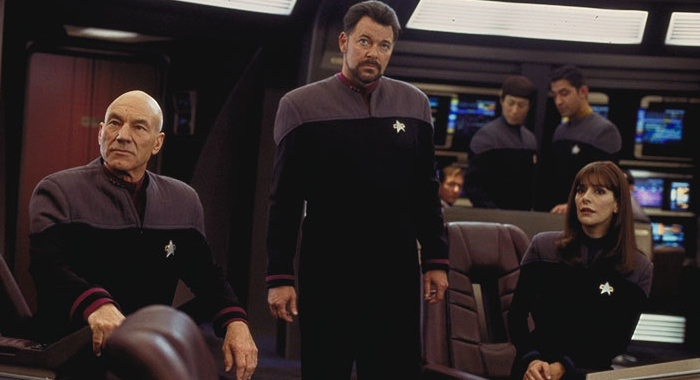
If 1998’s Insurrection found the Star Trek franchise suffering from what seemed like audience fatigue, 2002’s Nemesis — the final picture to feature The Next Generation’s crew – represented the onset of a full-on malaise. After over a decade of films that performed solidly at the box office and ran the critical gamut from great to respectable, Nemesis came as a profound letdown – not only with critics, who gave it the worst reviews the series had seen since The Final Frontier, but with the moviegoers who stayed away in droves; its $43 million domestic gross was almost as embarrassing as the fact that it made less than Maid in Manhattan its opening weekend. In the hands of new director Stuart Baird, Nemesis presented a more action-heavy Trek than audiences were accustomed to; unfortunately, this shift in direction alienated hardcore fans, and the script – partially inspired by an idea from Brent “Data” Spiner – failed to take advantage of its departing cast. In the words of USA Today’s Mike Clark, “As spent screen series go, Star Trek: Nemesis is… suggestive of a 65th class reunion mixer where only eight surviving members show up — and there’s nothing to drink.”
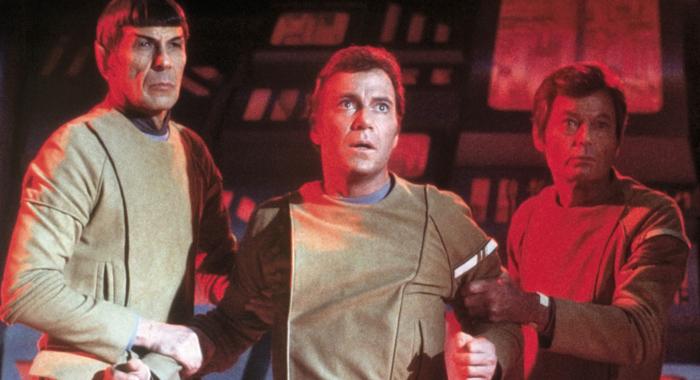
With a full decade between it and the end of the original series, you might think 1979’s Star Trek: The Motion Picture would have plenty of time to work out all the kinks – but alas, as the movie’s dismal Tomatometer (and decades of fan gags about “The Motionless Picture“) can attest, all of Trek’s time off didn’t translate into an auspicious big-screen debut for the crew of the Starship Enterprise. The problem with the first Trek film – aside from a dialogue-heavy storyline whose biggest villain was a cloud – actually had nothing to do with the franchise itself; instead, it was a series of corporate shenanigans, including an aborted attempt at a second Trek television series, that left director Robert Wise with a patchwork script and neither the time nor the money to realize his vision. Although The Motion Picture didn’t meet commercial or critical expectations (the Chicago Reader’s Dave Kehr called it “blandness raised to an epic scale”), it performed well enough to justify a sequel – and, in the bargain, kicked off one of the longest-running series in movie history.
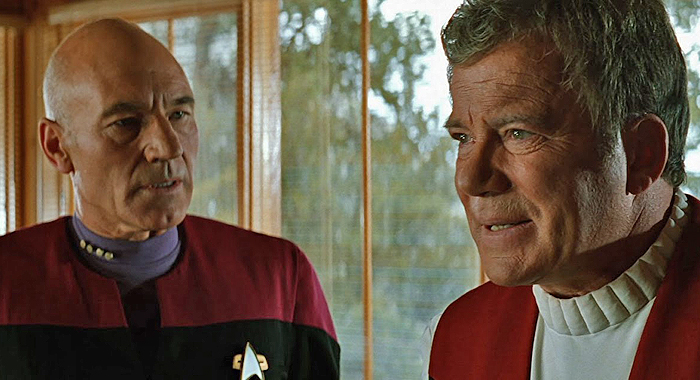
After seven years and 178 episodes, Paramount felt the time was right to give the cast of Star Trek: The Next Generation its cinematic debut – and since some members of the Enterprise’s original crew were either unwilling to return (Leonard Nimoy) or not well enough (DeForest Kelley), the seventh Trek movie seemed like the perfect spot for a changing of the guard. With a behind-the-scenes crew that included a number of Next Generation vets – including producer Rick Berman, director David Carson, and screenwriters Ronald D. Moore and Brannon Braga – 1994’s Star Trek Generations should have been a slam dunk, especially given a plot that put TNG’s Captain Picard (Patrick Stewart) face-to-face with James T. Kirk for the first time, but alas, it was not to be. Though it did well enough at the box office, slightly improving upon The Undiscovered Country’s worldwide tally, Generations received a mixed reception from writers like the New York Times’ Peter M. Nichols, who simultaneously criticized it as “predictably flabby and impenetrable in places” and praised it for having “enough pomp, spectacle and high-tech small talk to keep the franchise afloat.”

After handling screenplay duties for Generations and First Contact, writers Ronald D. Moore and Brannon Braga disembarked from Star Trek’s film voyage – but at this point, the Trek creative universe had expanded to the point that producer Rick Berman had plenty of new collaborators to choose from. He settled on Michael Piller, with whom he’d created the Trek TV spinoff series Deep Space Nine, and together – along with Jonathan Frakes, who returned to direct and reprise his role as Commander William T. Riker – they put together Insurrection, a story that introduced new wrinkles for familiar characters (such as LeVar Burton’s Lieutenant Commander Geordi LaForge briefly acquiring the ability to see without optical implants) while still holding true to the core themes of the series. Unfortunately, at this point, audiences were so used to seeing one Trek TV series or another that they needed something truly extraordinary to hold their attention on the big screen – and Insurrection, as evidenced by a gross that fell short of First Contact’s, wasn’t it. Still, even if critics didn’t find it to be the most compelling entry in the series, they weren’t completely dismissive; as Kenneth Turan of the Los Angeles Times wrote, “[It] lacks the adrenalized oomph of its predecessor, but no adventure of the Starship Enterprise is without its gee-whiz affability.”
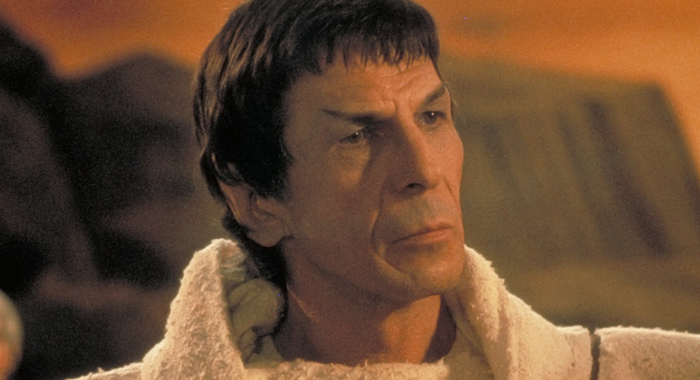
Leonard Nimoy a.k.a. Captain Spock, only agreed to return for The Wrath of Khan because his character died in the last act; fortunately for the franchise, he later had such a change of heart that not only did he come back for Star Trek III: The Search for Spock, he directed it – and did an admirable job of continuing the series’ resurgence, piloting the third chapter to a respectable $76 million domestic gross and generally favorable reviews from critics like Time’s Richard Shickel, who praised Nimoy for “beaming his film up onto a higher pictorial plane than either of its predecessors.” Though further odd-numbered entries in the series would famously come to represent Trek at its worst, Star Trek III cemented Gene Roddenberry’s creation as a viable ongoing concern for Paramount – and set the stage for the film series’ fourth chapter, thus clearing the path for Trek’s eventual return to television in 1987 with Star Trek: The Next Generation.
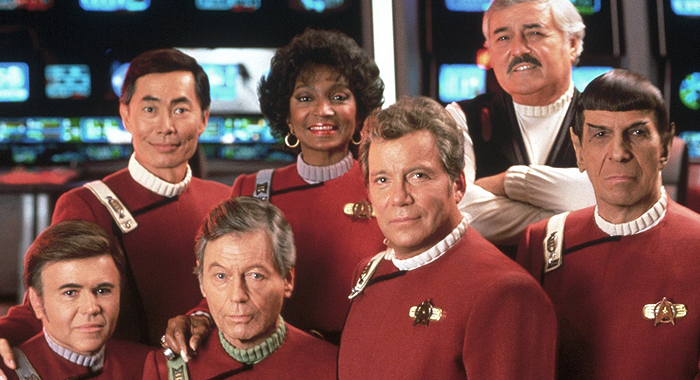
It might have suffered a cinematic black eye with 1989’s The Final Frontier, but the Star Trek franchise still had at least one thing going for it at Paramount – namely, the 25th anniversary of the series, which the studio was eager to capitalize on, even if it wasn’t willing to commit more than the $27 million spent to film the previous installment. Fortunately, the sixth Trek ended up in the hands of a director who knew how to make the most of minimal budgets: Nicholas Meyer, whose work on The Wrath of Khan was still, at that point, the critical apex of the series. Working from a Cold War-inspired story suggested by Nimoy, Meyer assembled The Undiscovered Country, whose 83 percent Tomatometer and nearly $100 million worldwide gross were not only fitting for a quarter-century celebration, but what ultimately ended up being the final voyage for much of the original cast. With series creator Gene Roddenberry passing away just prior to Country’s release, and the future of the franchise in question, not a few critics were left feeling nostalgic – like Hal Hinson of the Washington Post, who wrote, “If, indeed, Star Trek VI turns out to be the last of the series, it couldn’t have made a more felicitous or more satisfying exit.”
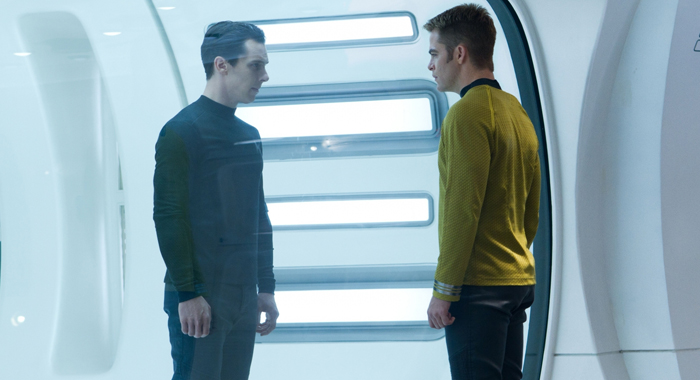
After leading the franchise to fresh heights of blockbuster glory, Star Trek director J.J. Abrams was the natural choice to man the controls for the next installment in the series — and although the result, 2013’s Star Trek Into Darkness, didn’t quite match the lofty standards set by its predecessor, it proved the Trek resurgence was no fluke. Continuing to explore the alternate timeline established by Abrams’ first chapter, Darkness carried the rebooted mythology forward while weaving in some fairly major callbacks to iconic events and characters from the original films — including the nefarious Khan Noonien Singh, whose quest for vengeance against the Federation sends the crew of the Enterprise on a race against (and across) time. “Star Trek Into Darkness banishes, at least for the moment, the lugubrious mood and sepulchral look that too many comic-book movies mistake for sophistication,” wrote the Washington Post’s Ann Hornaday. “All hail an action film that isn’t ashamed to have fun and to be seen doing it.”

Having explored the outer limits of space, Star Trek spent much of its fourth cinematic installment in decidedly more familiar environs – namely, the America (specifically the San Francisco bay area) of 1986, thanks to a storyline, conceived by returning director Nimoy, that had the crew of the Enterprise traveling 600 years back in time to retrieve a humpback whale in order to… well, it isn’t important, really. What mattered – at least to the folks who helped Star Trek IV: The Voyage Home to a $133 million worldwide gross – was that it lived up to Nimoy’s goal of showing audiences “a great time” with a feature that played up the lighter side of a franchise whose humor was often overshadowed by its big ideas. Weathering a number of pre-production storms – including William Shatner’s refusal to come back without a raise and the chance to direct the next sequel — Voyage triumphantly emerged as what Roger Ebert referred to as “easily the most absurd of the Star Trek stories – and yet, oddly enough… also the best, the funniest and the most enjoyable in simple human terms.”

The original Star Trek movie series was never really known for its blockbuster action, but director/producer J.J. Abrams took things in a far more fast-paced direction when he rebooted the franchise — and that continued after he handed the reins to Justin Lin for 2016’s Star Trek Beyond. Continuing to display the flair for thrilling set pieces he demonstrated during his tenure with the Fast & Furious saga, Lin sent the crew of the Enterprise hurtling to a distant planet where they found themselves pitted against the alien warlord Krall (Idris Elba) with an axe to grind against the Federation and a dark secret hidden in his past. It’s a setup with plenty of room for pulse-pounding space battles, and Lin didn’t disappoint — but he also left room for the thoughtful progressivism that had always been a hallmark of the earlier films, adding up to a fun Starfleet adventure critics hailed as a tasty bucket of popcorn sci-fi that doubled as a worthy celebration of Star Trek‘s 50th anniversary. The end result, wrote Katie Walsh for the Tribune News Service, is “everything you want a post-modern Trek movie to be: funny, poppy, self-referential — and with Captain Kirk punching bad guys in rubber masks.”
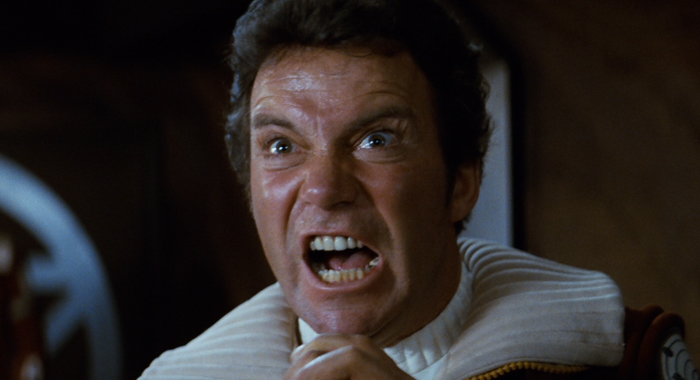
Sequels that expand upon their predecessors are exceedingly rare – but then, 1982’s Star Trek II: The Wrath of Khan is no ordinary sequel. After ponying up the then-princely sum of $46 million for the first Trek, Paramount was looking for two things: One, a scapegoat for the first film’s $136 million global gross (which ended up being series creator Gene Roddenberry, who was exiled from the decision-making process for Khan), and two, someone who could head up a cheaper second installment. That someone was Harve Bennett, a Trek novice who quickly immersed himself in the original series in search of a compelling villain for the sequel – and found him in Khan Noonien Singh (Ricardo Montalban), a superhuman with a thing for mind-controlling eels. Khan’s thrifty aesthetic may have inspired Bennett and director Nicholas Meyer to cut corners wherever possible – including reusing sets from The Motion Picture — but the movie didn’t skimp on storyline, much to the delight of fans and critics, both of whom rank the series’ second chapter at or near the top of the franchise. “Here comes a sequel that’s worth its salt,” wrote Janet Maslin of the New York Times, concluding “It’s everything the first one should have been and wasn’t.”
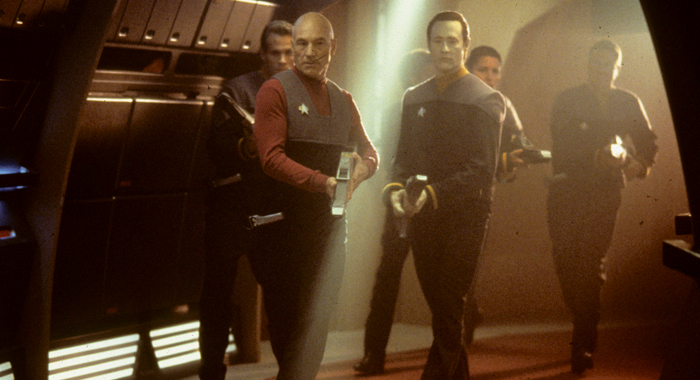
After three decades, seven films, and four television series, most franchises would have long since exhausted their options – but as 1996’s First Contact proved, the creative horizons of the Star Trek universe were capable of expanding longer and wider than perhaps even Gene Roddenberry could have suspected. Now firmly in control of the franchise, the Next Generation crew – both onscreen and off – was able to expand upon themes and characters touched on during its own series, specifically the nature of the endlessly assimilative cybernetic Borg collective. Having already proven a worthy adversary during TNG’s run – particularly during the classic episode in which they assimilated Picard himself – the Borg now propelled Trek to the best reviews (and some of the highest grosses) in its history. A sequel that both paid tribute to longstanding Trek traditions (TNG vet Jonathan Frakes directed, proving Leonard Nimoy wasn’t the only member of the Enterprise crew who could successfully pull double duty) and broke them (Paramount ended decades of parsimony by breaking out $47 million for the budget), First Contact earned the praise of critics like Time’s Richard Corliss, who wrote that “it stands proud and apart, accessible even to the Trek-deficient” before decreeing that “this old Star, it seems, has a lot of life in it.”

After bottoming out with 2002’s Star Trek: Nemesis, the series entered a state of suspended animation for over half a decade — and if it hadn’t been for the reboot mania that gripped Hollywood during the early 21st century, there’s no telling how long it might have stayed there. As it happened, fanboy-friendly director J.J. Abrams — then riding a hot streak as one of the creators/producers of the hit series Lost — was handed a set of jumper cables and the keys to the franchise; the result, 2009’s Star Trek, managed to hit the reset button on Trek (along with the requisite hot young cast) while incorporating enough familiar touches to keep longtime fans feeling at home. In the end, Abrams’ Trek earned some of the most positive reviews in the history of the franchise, and its $257 million gross firmed up the future of a film series that had seemed thoroughly uncertain just a few years before. “With Star Trek Abrams honors the show’s legacy without fossilizing its best qualities,” enthused Salon’s Stephanie Zacharek. “Instead, he’s whisked it off to a planet where numbing nostalgia can’t kill it, and where the future is still something to look forward to.”